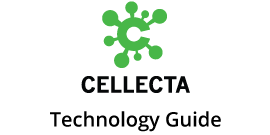Immune Receptor Profiling is a powerful tool for characterizing the adaptive immune system’s responses to cancer, autoimmune and infectious diseases, allergies, vaccinations, and therapeutic treatments. The unique sequences of the T-cell and B-cell receptors (TCRs and BCRs), and antibody variable regions (CDR3) that recognize foreign antigens define the individual differences in adaptive immune responses. Profiling the TCR and BCR variable regions using RT-PCR and NGS provides critical data for the discovery of novel, disease-associated immunity biomarkers.
Cellecta offers two types of DriverMap™ Adaptive Immune Receptor (AIR) repertoire profiling assays: AIR RNA and AIR DNA. Both assays are based on targeted multiplex PCR amplification and next-generation sequencing (NGS) analysis of variable T-cell receptor (TCR) and B-cell receptor (BCR) sequences using RNA and/or DNA purified from biological samples as the starting material.
Main Advantages of the DriverMap AIR Assays:
- Easy-to-use protocol that allows comprehensive, unbiased immune repertoire profiling from small samples (e.g., sorted cells, FFPE, biopsy or blood microsamples) or larger bulk samples (e.g., whole blood or tissue biopsies).
- Novel, multiplex RT-PCR protocol that provides the highest sensitivity for detecting functional or productive CDR3 clonotypes while also eliminating non-specific, off-target, and primer-dimer amplification products.
- Built-in Validator Barcodes (VBCs) in the structure of gene-specific primers are designed to identify and correct amplification biases and sequencing errors for both the AIR RNA and AIR DNA assays. The VBCs are normalized and enable quantification of the copy number of cDNA/DNA molecules used in amplification steps and detection of low-abundance clonotypes above the background level.
- Dual-index amplicon labeling strategy that minimizes the potential NGS shortcoming of index-hopping when using the Illumina Paired-End kit for CDR3 sequencing.
- Alignment software such as MiXCR (preferred choice), IMGT/HighV-QUEST, IgBLAST, IMSEQ, and LymAnalyzer software can be used for AIR assay NGS data analysis. Cellecta also provides custom data analysis services using MiXCR software. We can generate interactive reports that include comprehensive immune receptor repertoire profiling across the antigen-recognition CDR3 region, accurate clonotype quantitation, tracking and cross-sample comparison, CDR3 length distribution, repertoire diversity and V(D)J segment usage, clonal evolution, and isotype composition for BCRs.
Need more help with this?
Contact Us

